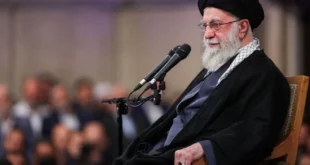 Angry Iranians attacked several gas stations in protest after the government suddenly began long-threatened fuel rationing, while many others rushed to fill their tanks.
Angry Iranians attacked several gas stations in protest after the government suddenly began long-threatened fuel rationing, while many others rushed to fill their tanks.
Several stations were attacked “by vandals,” state radio reported early Wednesday. It did not say how many stations were damaged or give details.
The Oil Ministry announced the start of rationing Tuesday night, just three hours before it was due to begin at midnight. Some stations in Tehran had lines more than a half-mile long as drivers tried to get one last fill-up before the limitations kicked in.
Minutes before midnight, car owners still caught in the long lines began blaring their horns over and over in protest – sparking arguments with nearby residents trying to sleep.
“Is this good timing, to announce rationing only three hours before it starts?” complained Ahmad Safai, a 30-year-old shopkeeper who was in line. “I had no gas in my car’s tank when I heard the report.”
The Iranian government has been planning for weeks to implement rationing, which was supposed to begin May 21 but was repeatedly delayed. In May, the government reduced subsidies for gas, causing a 25 percent jump in the price.
The issue is enormously sensitive in this oil-rich nation, where people are used to having cheap and plentiful gas.
Hard-line President Mahmoud Ahmadinejad came to power in the 2005 election based largely on his promises to improve the faltering economy. But his failure to do so has sparked widespread criticism.
“This man Ahmadinejad has damaged all things. The timing of the rationing is just one case,” said Reza Khorrami, a 27-year-old teacher who was among those lined up at one Tehran gas station before midnight.
Iran is the second-biggest exporter in the Organization of Petroleum Exporting Countries. But because it has low refining capability, it has to import more than 50 percent of its gasoline needs. To keep prices low, the government subsidized gas sales, saddling it with enormous costs.
Under the rationing plan, owners of private cars can buy only 26 gallons of fuel per month at the subsidized price of 38 cents per gallon. Taxis can get 211 gallons a month at the subsidized price.
Conservatives in Iran’s parliament, especially those aligned with the country’s national oil company, have long pushed for higher gasoline prices with the hope of curtailing demand and freeing up government spending to invest in more oil and gas production.
Still, Ahmadinejad has resisted allowing increases because of his campaign promises to share Iran’s oil wealth with the nation’s poor. Iran has a law that says gasoline prices must increase 10 percent every year, but the president has resisted efforts by parliament to reverse a 2005 decision to suspend the annual increases.
 Eurasia Press & News
Eurasia Press & News



